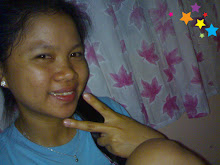1. Describe the four categories of output.
- Text-consists of characters (letters, numbers, punctuation marks, or any other symbol requiring one byte of computer storage space) that are used to create words, sentences, and paragraphs.
- Graphics-are digital representations of nontext information such as drawings, charts, photographs, and animation (a series of still images in rapid sequence that gives the illusion of motion).
- Audio-is music, speech, or any other sound.
- Video- consists of images played back at speeds to provide the appearance of full motion.
2. The characteristics of LCD monitors, LCD screens, plasma monitors, and HDTVs.
Liquid crystal display (LCD)-is a thin, flat electronic visual display that uses the light modulating properties of liquid crystals (LCs). LCs do not emit light directly.
They are used in a wide range of applications, including computer monitors, television, instrument panels, aircraft cockpit displays, signage, etc. They are common in consumer devices such as video players, gaming devices, clocks, watches, calculators, and telephones.
Liquid crystal display (LCD)-is a thin, flat electronic visual display that uses the light modulating properties of liquid crystals (LCs). LCs do not emit light directly.
They are used in a wide range of applications, including computer monitors, television, instrument panels, aircraft cockpit displays, signage, etc. They are common in consumer devices such as video players, gaming devices, clocks, watches, calculators, and telephones.
3. What are the components inside the system unit.
Motherboard-sometimes called a system board is the main circuit board of the system unit.
Processor- also called the Central Processing Unit (CPU), interprets and carries out the basic instructions that operate a computer
Control Unit- is the component of the processor that directs and coordinates most of the operations in the computer.
Arithmetic Logic Unit-another component of the processor, performs arithmetic, comparison, and other operations.
Machine Cycle- for every instruction, a processor repeats a set of four basic operations, which comprise a machine cycle.
System clock-the processor relies on a small quartz crystal circuit called the system clock to control the timing of all computer operations.
Dual-Core Processor-is a single chip that contains two separate processors.
Multi-core processor- is a chip with two or more separate processors.
Memory-consists of electronic components that store instructions waiting to be executed by the processor, data needed by those instructions, and the results of processed data (information).
RAM (Random Access Memory) - also called main memory, consists of memory chips that can be read from and written to by the processor and other devices. The RAM is where most files that are used while the computer is on, are stored while being used.
Memory module-this is where RAM chips usually reside. This is a small circuit board. -Memory slots-These are the slots on the mother board that hold the memory module.
Cache-is how computers improve processing times

Walang komento:
Mag-post ng isang Komento